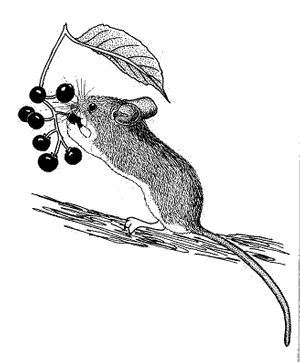What Mice Look Like
 |
Mice belong to the family of gnawing mammals commonly called Rodentia, the rodents. The mice belong to the broad group of pointed-nosed, long-tailed rodents. Several different species of mice may nibble on your landscape plants.
The field mouse is white underneath and gray-brown on top, while the house mouse is uniformly gray all over. White-footed mice and deer mice range over most of the continent in many species and subspecies. They have whitish underparts like the field mouse, as well as whitish legs and feet.
Handle these critters carefully, the deer mouse harbors the tick which carries lyme disease, and in some areas also carries hantavirus.
Distinguishing the Mice from Voles
Let’s separate the mice from the voles. Both are small, furry, and cute, and they belong to the same family of rodents. However, mice typically have larger ears and longer tails than voles. It doesn’t help that voles are often called “meadow mice” in the literature. Mice and voles cause millions of dollars in damage every year in orchards, food storage areas, and in homes. Voles alone are a major pest in apple orchards. They can also wipe out gardens and flower beds. Yardener’s Helper deals here only with those pest animals that might be a problem outside in the yard and garden. Mice inside the home must be dealt with differently than those in the yard.
For more information about voles see the file “Dealing With Voles”
Mice’s Feeding Habits
Deer mice and white footed mice are mostly active at night. Occasionally these mice enter houses and can damage houeshold items such as clothing, furniture, mattresses, and paper goods in their search for suitable nesting materials. They eat most anything but prefer grain. Mice eat grasses, berries, seeds, nuts and insects.
Plants Vulnerable to Mice
Roots of vegetable and flower plants in the garden are fair game for mice. They like tulip bulbs. Mostly seed eaters, they will gnaw on tomatoes, beans, cucumbers and other crops to reach the seeds. . These rodents also gnaw on roots of young trees and shrubs especially on the bark buried under the snow during the winter months. Be careful during your analysis of bark chewing. If the bark was chewed under the snow, it was probably mice. If the chewing took place above the snow, it was probably rabbits. Mice may chew at the snow height by walking on the snow, but never above the snow. Mice will not chew off a branch of a young tree like a rabbit will do.

